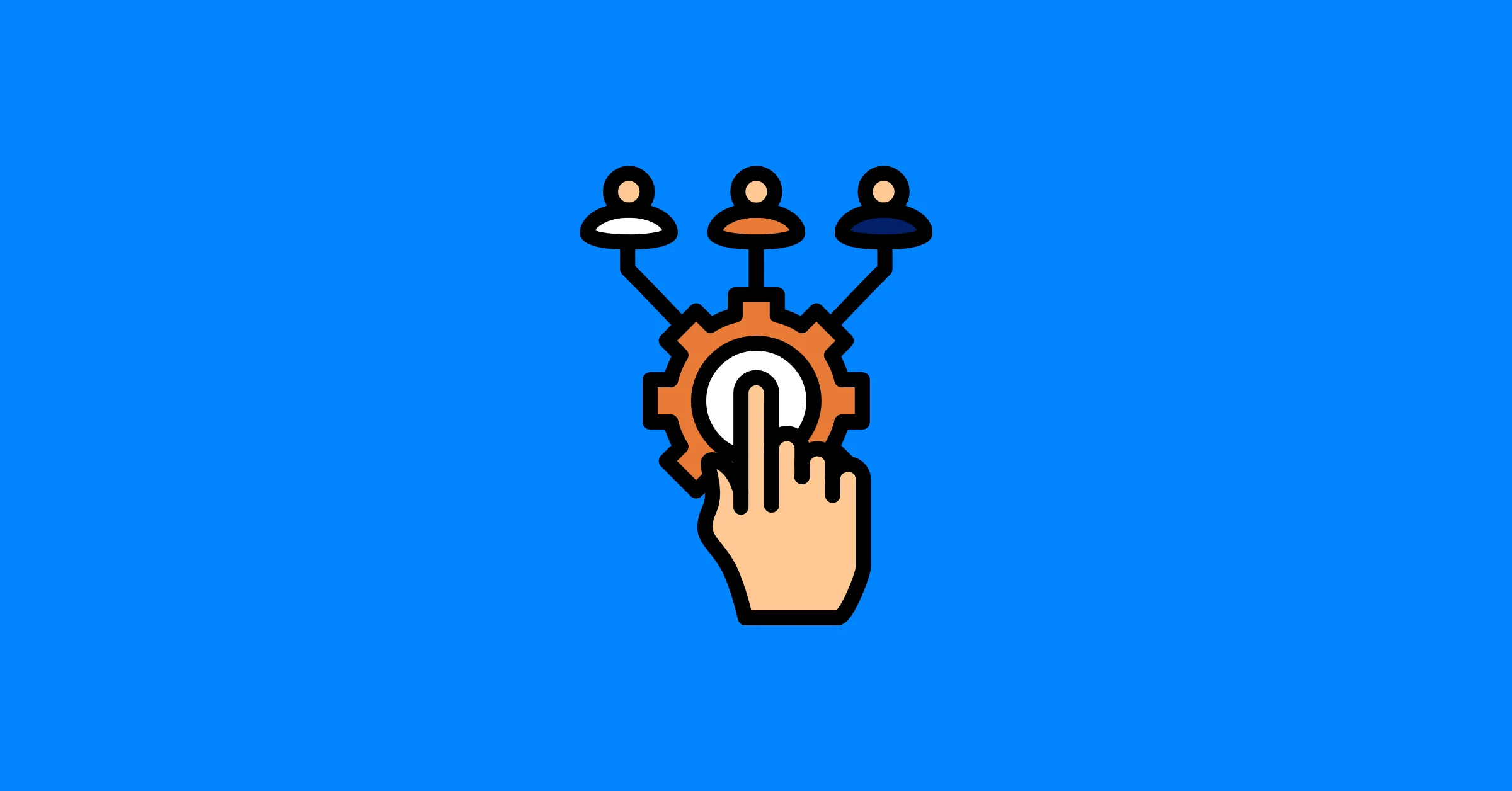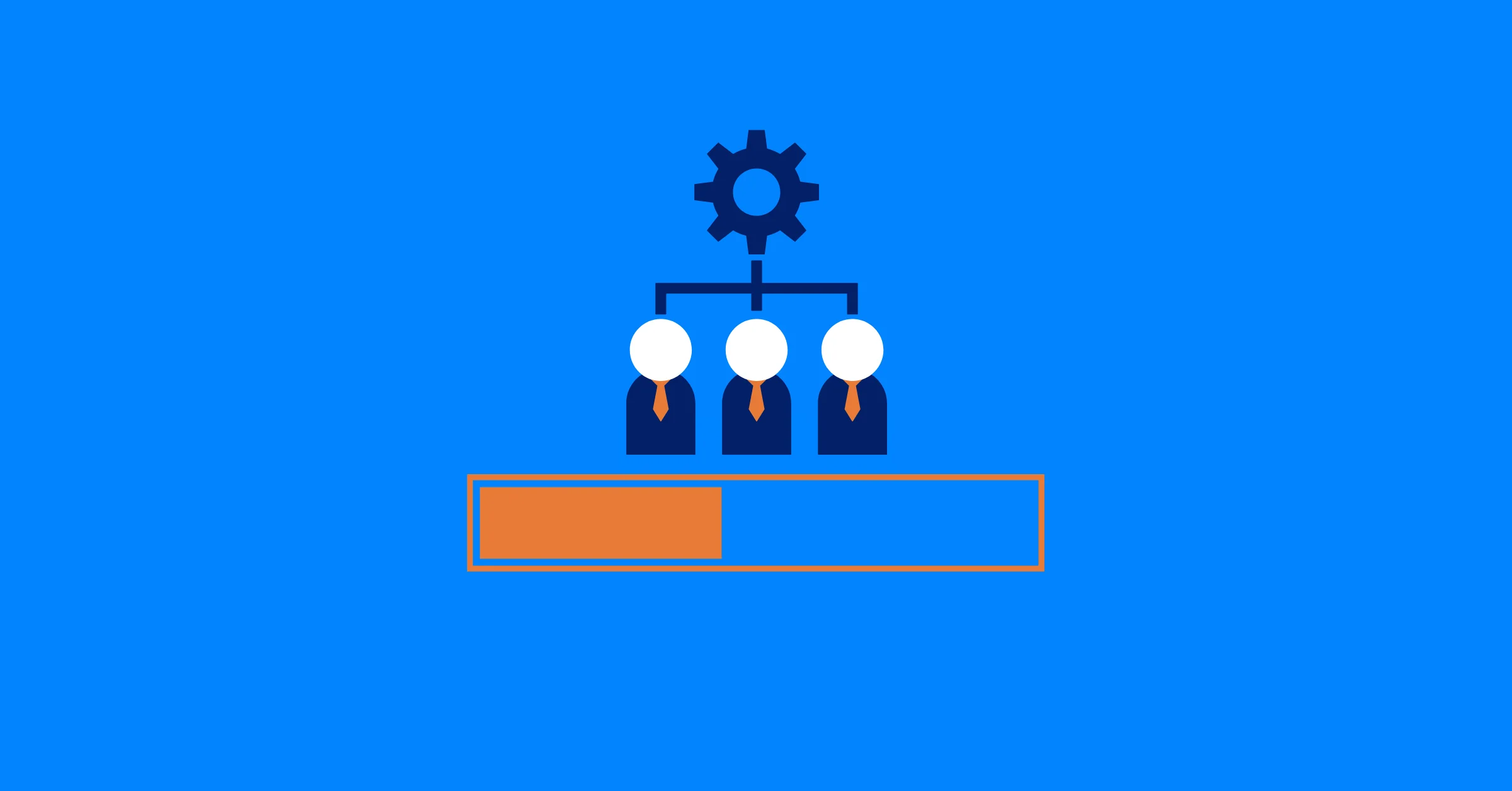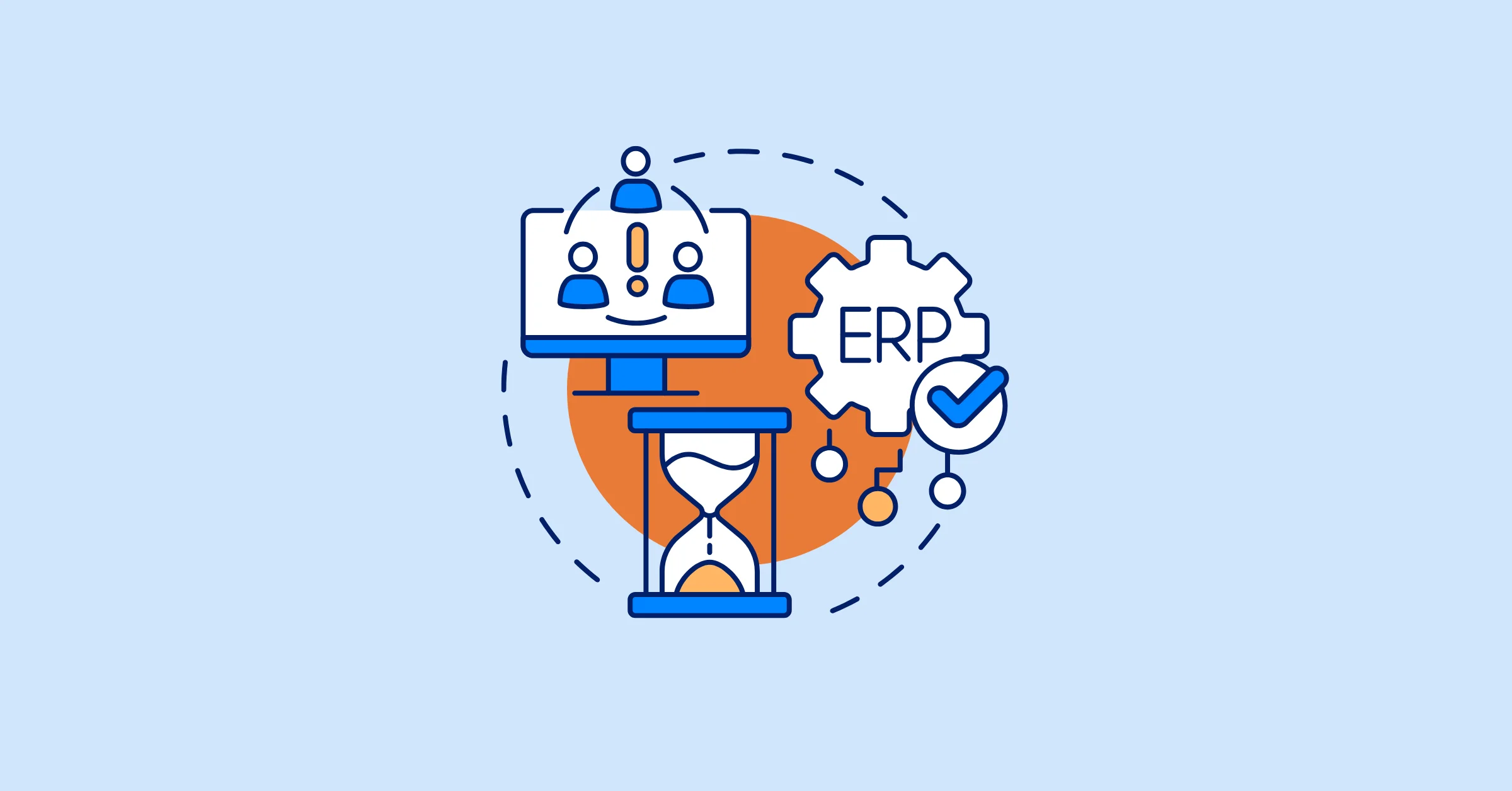Top 8 Resource Capacity Planning Software for Project Manager 2025
Discover the top 8 resource capacity planning software for project managers in 2025. Compare features, pros, cons, and pricing of leading solutions.
Effective resource capacity planning is key to managing projects successfully. The right software helps you allocate people, time, and budget efficiently, turning disorganized workflows into more manageable processes. As project needs shift, selecting the right resource capacity planning software ensures you stay on track and within budget.
In this article, we’ll review the top 8 resource capacity planning software options for 2025. We’ll cover the pros, cons, pricing, and key features of each, along with tips on how to choose the best one for your needs. The right resource capacity planning software will help you improve productivity, prevent resource conflicts, and achieve better efficiency in your projects.
Key Takeaways- Resource capacity planning software centralizes and streamlines resource allocation for efficient project management.
- It enhances forecasting, prevents overbooking, and minimizes cost overruns.
- The best resource capacity planning software delivers real-time visibility and seamless integration with other project management tools.
- Compare features, pros, cons, and pricing to choose the ideal resource capacity planning software for your project needs.
What is Resource Capacity Planning?
Resource capacity planning is the process of determining and managing the resources needed to meet the demands of a project or organization. It involves assessing the available resources—such as people, equipment, and time—and ensuring they are used effectively to meet project goals and deadlines.
The goal of resource capacity planning is to match the available resources with project requirements, so there’s no over-allocation or underutilization. It helps prevent bottlenecks, delays, and wasted resources while ensuring that teams can deliver their work on time and within budget.
Key elements of resource capacity planning include:
- Forecasting demand: Understanding future project needs and resource requirements.
- Allocating resources: Assigning the right people, tools, and materials to the right tasks.
- Balancing workloads: Ensuring that no resource is overburdened or underused.
- Tracking progress: Monitoring resource utilization and adjusting as necessary to stay on track.
Effective resource capacity planning enables organizations to optimize their operations, avoid resource conflicts, and maximize efficiency.
For a deeper dive into the fundamentals of capacity planning, check out our article on What is Capacity Planning?
Importance of Resource Capacity Planning in Project Management
Effective resource capacity planning is the backbone of every successful project. The right resource capacity planning software not only organizes your resources but also provides real-time data to adjust allocations as projects evolve. With robust resource capacity planning software, you can:
- Ensure the right team members are assigned to tasks at the right time.
- Prevent resource conflicts and burnout.
- Optimize budgets through accurate forecasting.
- Enable data-driven decision-making with comprehensive reporting.
By leveraging powerful resource capacity planning software, project managers can enhance productivity and maintain control over every phase of a project.
Top 8 Resource Capacity Planning Software
Choosing the right resource capacity planning software can significantly impact your project's success. Here’s a comparison of the top 8 tools for 2025, highlighting their key features, pros, cons, and pricing:
1. TaskFord
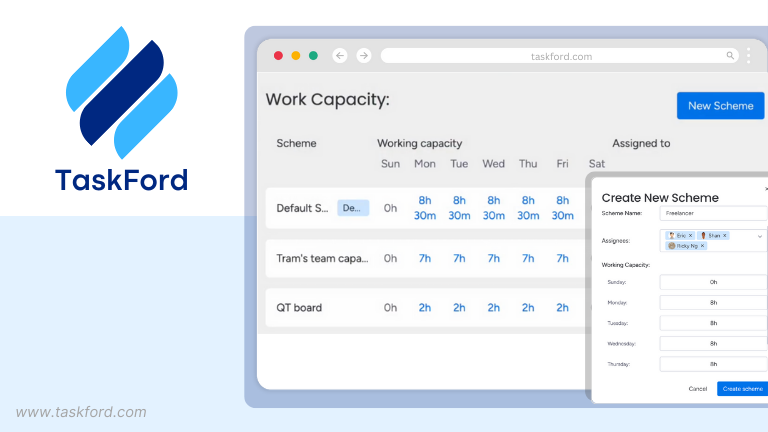
TaskFord is a comprehensive solution that integrates task tracking, project management, and resource planning. As software with a resource capacity planning feature built in, TaskFord offers a unified platform to monitor resource and capacity utilization and improve project outcomes.
Pros:
- User-Friendly Interface: TaskFord offers an intuitive and easy-to-navigate interface, making it accessible for teams of all skill levels.
- Comprehensive Task and Project Management: The software supports a variety of views (Kanban, Gantt, Table, etc.), helping teams manage tasks, track progress, and meet deadlines efficiently.
- Resource Allocation and Planning: TaskFord provides tools to effectively allocate resources, ensuring that the right people are working on the right tasks at the right time.
- Customizable Workflow: TaskFord allows you to customize workflows, ensuring that teams can work in a way that best suits their processes.
- Real-time Collaboration: Teams can collaborate in real-time, updating tasks, making comments, and sharing files directly within the platform.
- Budget Tracking: TaskFord has built-in budget tracking, helping teams stay within financial constraints.
Cons:
- Limited user history compared to established tools
- The new app may require initial training and onboarding for full feature adoption.
Pricing: TaskFord offers a free version with essential features. Paid plans are for advanced functionalities; details are to be announced upon launch.
2.TimePlanner
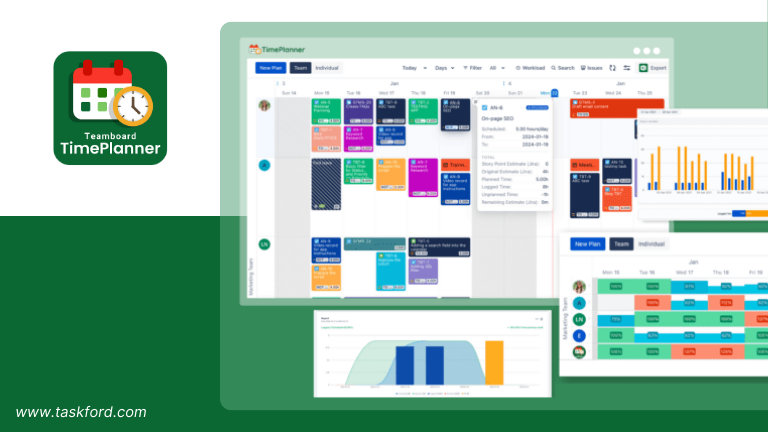
TeamBoard TimePlanner is designed to help project managers streamline scheduling and resource allocation on Jira. This resource capacity planning software focuses on precise time and workload management.
Pros:
- User-friendly scheduling interface.
- Effective time-blocking and workload distribution.
- Support importing data between calendar applications.
Cons:
- Limited to Jira users
Pricing: TimePlanner offers a free trial and free for up to 10 users in Jira. TimePlanner offers tiered pricing plans that scale with your team size. Check here for detailed pricing information.
3. Bonsai
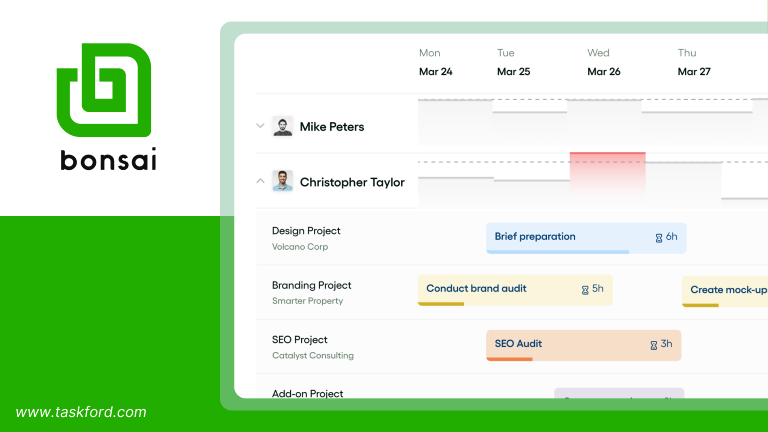
Bonsai is a resource-planning solution tailored for agencies and consultancies, offering managers a visual, real-time way to schedule team members, balance workloads, and monitor capacity against project timelines. Its intuitive interface supports better planning across distributed teams without relying on spreadsheets.
Pros:
- Live capacity reporting with real-time availability across time zones.
- Automatic handling of custom hours, vacations, and public holidays.
- Integrated time tracking syncs with utilization and profitability insights.
Cons:
- Advanced resource-planning features are only available on the Premium tier.
- It may not offer the depth or flexibility required by larger enterprises.
Pricing: Bonsai uses a per-user, per-month pricing model starting around $15, with lower rates for annual plans. A free trial is available, and subscriptions include access to additional project, financial, and client tools.
4. ResourceGuru
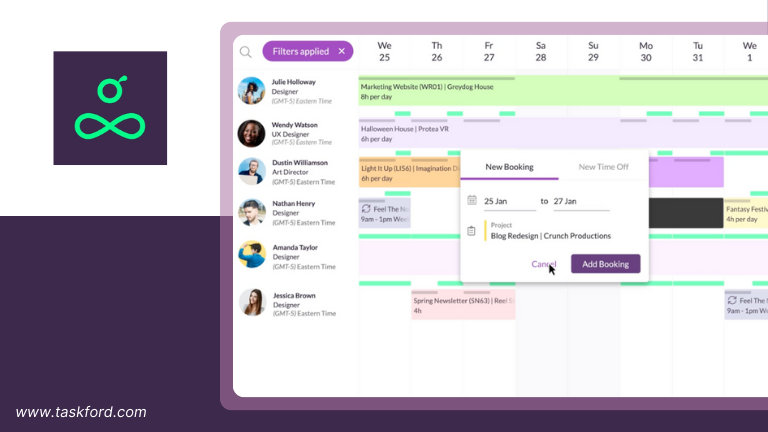
ResourceGuru is a well-known resource capacity planning software that focuses on visual scheduling and resource allocation across projects.
Pros:
- Highly visual and easy-to-use interface.
- Efficient drag-and-drop scheduling.
- Strong reporting capabilities for tracking resource utilization.
Cons:
- It may not offer extensive customization for niche industries.
- Some advanced features might require premium plans.
Pricing: Resource Guru offers transparent pricing on their website with plans suited for small to mid-sized teams.
5. Smartsheet
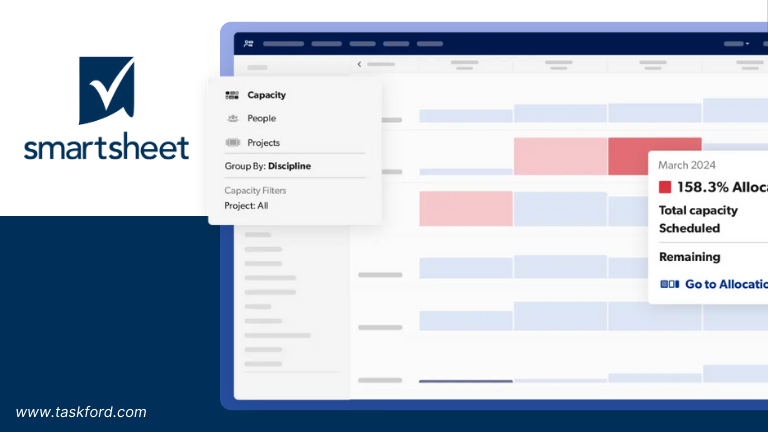
Smartsheet provides a dynamic resource capacity planning software solution that combines spreadsheet familiarity with robust automation and integration features.
Pros:
- Familiar interface with powerful collaboration tools.
- Customizable templates for diverse project needs.
- Seamless integration with other business applications.
Cons:
- The learning curve can be steep for new users.
- Premium features can significantly increase the cost.
Pricing: Smartsheet offers various pricing tiers based on features and user count; detailed pricing is available on their website.
6. ProjectManager
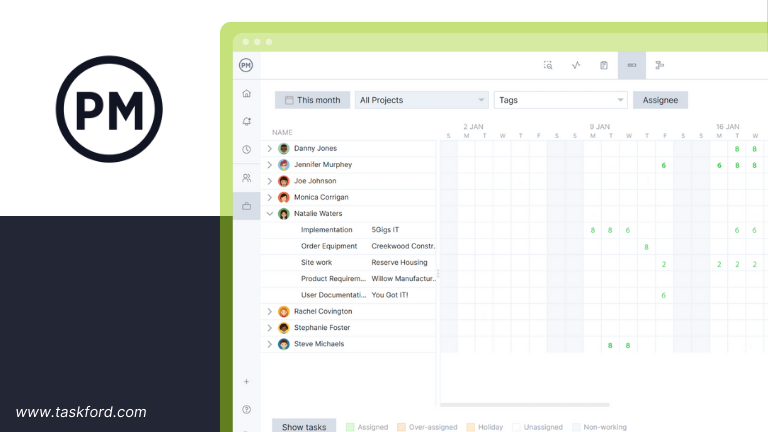
ProjectManager integrates resource planning with project management, offering comprehensive visibility into project tasks, timelines, and resource allocation.
Pros:
- Integrated resource planning with project tracking.
- Customizable dashboards and real-time reporting.
- Excellent for tracking project budgets and timelines.
Cons:
- May be overwhelming for smaller teams.
- Pricing can be on the higher side for advanced features.
Pricing: ProjectManager offers a range of plans tailored to different team sizes and project requirements; visit their website for detailed pricing information.
7. Float
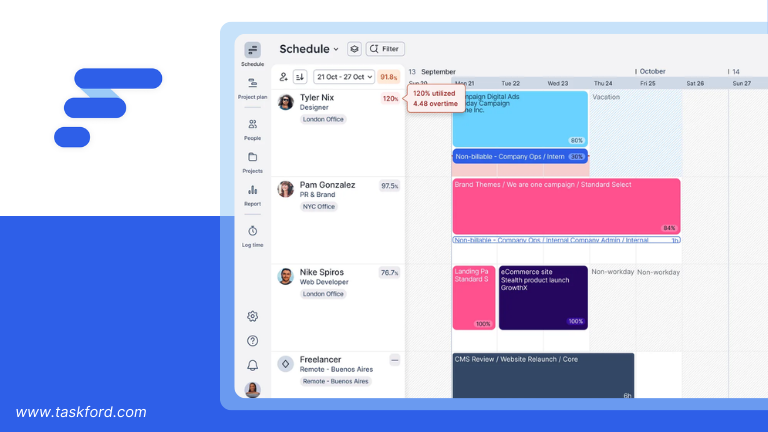
Float is a dedicated resource capacity planning software focused on visual scheduling and resource forecasting. Float is designed for clarity and simplicity.
Pros:
- Clean, intuitive interface with a mobile app available.
- Real-time updates and easy drag-and-drop scheduling.
- Excellent visualization of resource availability.
Cons:
- Limited advanced reporting features.
- May lack extensive integration options compared to more comprehensive solutions.
Pricing: Float offers competitive pricing plans with options for small to mid-sized teams; check their website for current rates.
8. HubPlanner
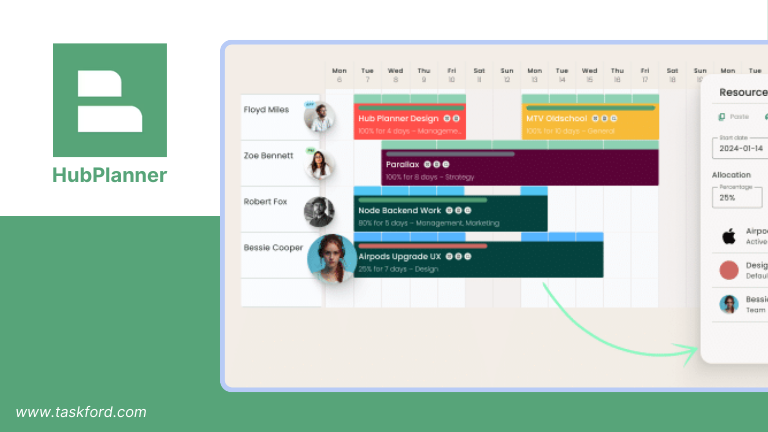
HubPlanner provides a comprehensive approach to resource capacity planning software, with robust scheduling, forecasting, and reporting features that cater to complex project needs.
Pros:
- Advanced scheduling and forecasting tools.
- Detailed reporting and analytics.
- Strong integration with HR and project management systems.
Cons:
- The interface can be complex for new users.
- Implementation may require more training compared to simpler solutions.
Pricing: HubPlanner offers various pricing options tailored to different organizational sizes; detailed information is available on their website.
Comparison Table
Below is a quick comparison of the top 8 resource capacity planning software options:
| Software | Key Features | Pros | Cons | Best For | Pricing |
|---|---|---|---|---|---|
| TaskFord | Unified dashboard, real-time analytics | Intuitive, comprehensive integration | Learning curve for advanced features | Teams of all sizes | Flexible, competitive plans |
| TimePlanner | Time-blocking, scheduling interface | Easy scheduling, calendar integration | Limited advanced analytics | Teams focused on scheduling | Tiered pricing available |
| Bonsai | Real-time capacity planning, time tracking | Automated scheduling, utilization insights | Advanced tools gated behind Premium | Midsize agencies and consultancies | Starts around $15/user/mo |
| ResourceGuru | Visual drag-and-drop scheduling | Highly visual, user-friendly | Limited niche customization | Small to mid-sized teams | Transparent pricing online |
| Smartsheet | Customizable templates, robust automation | Powerful collaboration, familiar interface | Steep learning curve, higher cost | Teams needing extensive integration | Various pricing tiers |
| ProjectManager | Integrated project & resource tracking | Comprehensive dashboards, budget tracking | It can be overwhelming for small teams | Larger organizations | Premium pricing |
| Float | Visual scheduling, real-time updates | Clean interface, intuitive visualization | Limited reporting features | Teams valuing simplicity | Competitive pricing |
| HubPlanner | Advanced forecasting, detailed reporting | Robust analytics, strong integrations | Steeper learning curve, higher cost | Enterprise-level resource planning | Enterprise-focused pricing |
How to Choose the Best Software for Your Needs
Selecting the right resource capacity planning software for your organization involves considering several key criteria:
Criteria for Selecting a Software
- Functionality: Look for essential features such as real-time dashboards, predictive analytics, integration capabilities, and user-friendly interfaces.
- Scalability: Ensure the software can grow with your organization and adapt to evolving project demands.
- Cost vs. Value: Evaluate the long-term ROI of the software rather than focusing solely on the upfront costs.
- Customization: The software should be flexible enough to align with your unique business processes and resource needs.
- Vendor Support: Strong customer support and an active user community can make a significant difference in successful implementation.
Aligning Resource Capacity Planning Software with Your Project Goals
Ensure your chosen resource capacity planning software is aligned with your project management objectives. Consider factors such as:
- The size of your team and the complexity of projects.
- Integration with your existing project management and HR systems.
- Your organization’s growth trajectory and future resource planning needs.
Why TaskFord Stands Out
Among the top resource capacity planning software options, TaskFord stands out due to its comprehensive integration of task tracking, resource planning, time tracking, and cost management—all in one unified platform. TaskFord offers:
- Real-Time Insights: Instant dashboards and analytics for proactive decision-making.
- Seamless Integration: Connects with various systems to provide a single source of truth.
- User-Friendly Experience: Intuitive design that drives high adoption rates.
- Flexible Pricing: Scalable options to meet the needs of small teams to large enterprises.
TaskFord’s comprehensive solution is designed for project managers who want to simplify resource management without compromising on functionality. By choosing TaskFord, you gain a powerful resource capacity planning software that helps you stay ahead in a competitive market.
Conclusion
In conclusion, the right resource capacity planning software is essential for any project manager aiming to optimize resource allocation, enhance productivity, and ensure projects are delivered on time and within budget. The top 8 solutions for 2025—TaskFord, TimePlanner, Resource Guru, Smartsheet, ProjectManager, Float, and Hubplanner—each offer unique strengths to meet different organizational needs.
By carefully evaluating key features, pros, cons, and pricing, you can choose the resource capacity planning software that aligns perfectly with your project goals. Whether you are looking for real-time insights, robust integrations, or a user-friendly interface, there is a solution out there that can transform your resource management strategy.
Making work simpler,
smarter, and more connected
Join our waitlist and be notified first.

Related Blog
Subscribe for Expert Tips
Unlock expert insights and stay ahead with TaskFord. Sign up now to receive valuable tips, strategies, and updates directly in your inbox.

